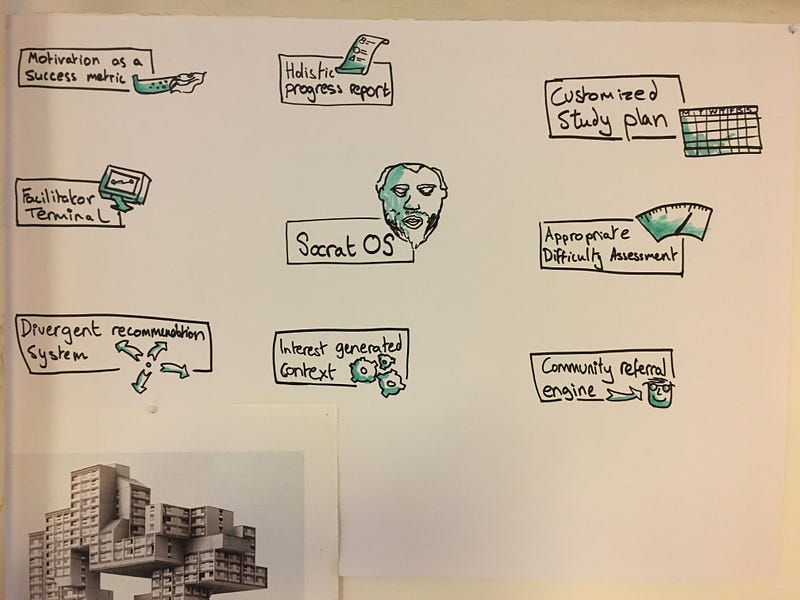As part of this final project, I’ve been thinking a lot about standardization in regards to the educational system. Personally, one of the biggest burns I experienced in high-school was having to adhere to a system that had no room for computation and design — two of the main things I’ve been doing as work and now studying at CIID, a progressive project-based design school in Copenhagen.
In a flurry of research on education, motivation, and pedagogy, there are a few things surrounding schools and learning that I concluded:
- Where there is motivation, learning happens
- Autonomy is key to motivation and therefore key to learning
- The teacher’s role is best as a facilitator and not as a lecturer/dictator
- Empowering students to study what they like will lead them to learning a whole slew of things as an after effect
- Students need to be given direction and inspiration in the form of interesting options based on what they enjoy already
Following these discoveries, a friend pointed me in the direction of a critical pedagogy project by Ted Hunt called The School Of _____.
I decided to have a crack at it by combining all I know and enjoy about technology, and all the angst I have against standardization in education. The result is 2 schools: The School of Open-Source Everything and The School of Snowflake curriculums. You can read the 200 word submissions for each below.
The School of Open-Source Everything
With the advent of technology, the possibility to make the source of knowledge not only globally accessible, but also editable is finally a reality.
As OSES (Open-Source Everything School), we allow and encourage students to manipulate any data pertaining to the school, including, but not limited to, their own curriculum, their peers’ curriculum, studying material, assessment questions, administration tools, and the school’s website.
Students, faculty and administration at OSES are all called contributors. Contributors ranks are defined by the amount they contribute to the data, as well as by peer-reviewed quality checks, much like existing open-source communities such as Wikipedia.
All changes and contributions are always tracked and anyone can choose to revert to previous versions if need be. One of the benefits of an open-source system is that members that don’t agree with the source code changes, but want to develop on that base, can create a fork and continue to develop it on their own.
We believe this highly fluid model, based largely on mutual trust, will empower our contributors to become active participants in society outside of the school, and help them develop their own communities as well.
The School of Snowflake Curriculums
No two snowflakes are ever alike, and nor should this be true of any two curriculums. However, we can’t expect of any human, or group of humans for that matter, to achieve this utopic ideal in a way that is economically viable and psychologically healthy.
Thanks to advances in machine learning, we can envision a school with an operating system taking the place of people doing repetitive administrative work. SchoolOS, as it would be called, would be able to observe students’ growth based on a variety of inputs including assignments, psychological tests, and student preferences. It will then build a completely customized curriculum and study guide for said student that will be reactionary and evolve dynamically.
SchoolOS will free up the time from faculty by eliminating all administrative tasks so that the teacher can focus on what a teacher does best: facilitate group dynamics and expose children to new materials.
The excuses pertaining to cost and human resources for standardized testing and curriculums will be rendered immediately null with the introduction of SchoolOS. It will ensure that students are learning what both they, and society, need but provide it at a time and pace that is suited entirely to the individual.
These are of course simple abstracts of how the schools would actually function, but I believe that there must be a way to reduce the costs of good education to bring it out of the private sector. That personalized, small classrooms only exist in private school in places like the US, Canada and the UK is ludicrous to me.
I don’t typically enjoy the narrative of technology being the lord and saviour, but our schools have always evolved with the technologies we created, the advent of open data and deep learning has yet to be explored in the context of education.
This is a progress update entry in my 7 week final thesis project at CIID. You can read all the other entries here.

